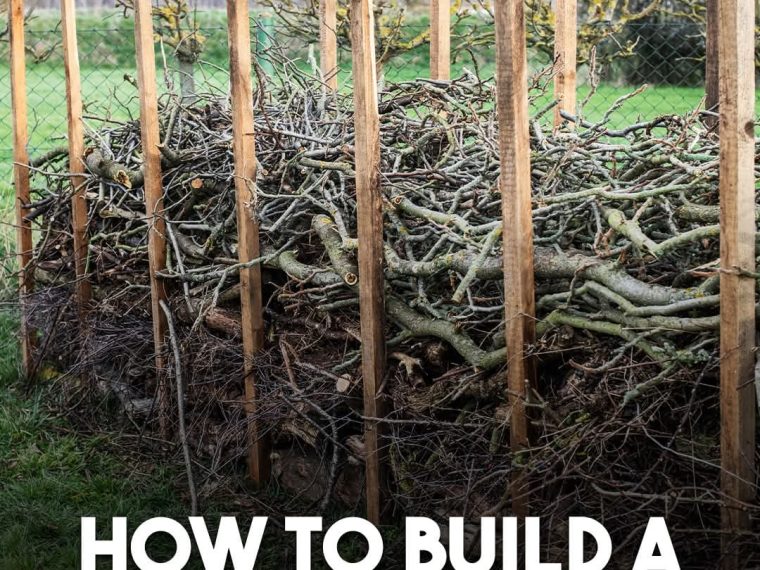A dead hedge is a simple yet effective way to utilize garden waste while providing habitat and shelter for wildlife. This eco-friendly structure is made from cut branches, twigs, and other natural debris stacked between wooden stakes, forming a barrier that mimics a living hedge but with additional benefits.
If you’re looking for a sustainable, low-maintenance feature for your garden, a dead hedge might be the perfect choice.
What Is a Dead Hedge?
A dead hedge is essentially a fence-like structure made from dead wood and garden trimmings. Unlike a traditional hedge that consists of living plants, a dead hedge is built by stacking cut branches, pruned twigs, and other organic materials between upright stakes.
Over time, as more organic matter is added, it becomes a robust and natural barrier that slowly decomposes, providing a vital habitat for many creatures.
The Benefits of a Dead Hedge
1. Provides a Haven for Wildlife
One of the most significant benefits of a dead hedge is its role in supporting biodiversity. Birds, insects, and small mammals can use it as shelter, nesting sites, or a food source. Hedgehogs, in particular, thrive in dead hedges, finding refuge and protection from predators.
Amphibians such as frogs and toads may also use the hedge as a damp hiding place, while insects like beetles, bees, and butterflies can benefit from the decaying wood and sheltering branches.
Dead hedges are particularly beneficial for birds, offering them multiple advantages. Many bird species use dead hedges as nesting sites, taking advantage of the dense twigs and branches for protection from predators. The hedge also serves as a rich feeding ground, attracting insects that birds rely on for food.
2. Natural Recycling of Garden Waste
Instead of sending pruned branches and twigs to the landfill or burning them, you can repurpose them into a dead hedge. This reduces waste and promotes a circular approach to garden maintenance, where organic matter stays within the ecosystem.
3. Acts as a Windbreak and Privacy Screen
A well-constructed dead hedge serves as a natural windbreak, helping to shield delicate plants from strong winds. Additionally, it can act as a privacy screen, creating a secluded and peaceful garden space without the need for artificial fencing.
4. Improves Soil Health
As the materials in the dead hedge break down, they slowly release nutrients into the soil. This process enhances soil fertility, supporting plant growth and overall garden health. Plus, the decomposing wood retains moisture, helping to improve soil hydration.
5. Aesthetic and Rustic Appeal
Dead hedges bring a charming, rustic look to your garden. They blend seamlessly with natural surroundings and can complement a variety of garden styles, from wildflower meadows to cottage gardens.
How To Build A Dead Hedge
You want to start by selecting some stakes. You can use square posts like this or round fencing posts – it really doesn’t matter. To make your life easier though I strongly advise adding a point to the end. This makes them much easier to drive into the soil. If yours aren’t already pointed then you can easily add one with a hand or circular saw.
Once your stakes are sharpened drive them into the soil. You want a good couple of feet to be below the surface as it is these stakes that will keep your dead hedge upright.
Line your stakes up in two parallel rows. The width can be whatever you like but just be aware that you have enough material to fill it up to the desired height.
Start by adding large logs to the bottom.
Then go back and add more big logs and sticks. These will push the smaller branches down, compacting your dead hedge. It is this compacting of twigs and sticks that provides so many brilliant hidey holes for all kinds of wildlife.
As the hedge settles, continue adding new materials to keep it dense and effective.
Dead hedges are a fantastic way to make your garden more sustainable, wildlife-friendly, and visually appealing. By repurposing natural waste, you can create a functional and beautiful feature that benefits both your garden and the local ecosystem. Consider incorporating a dead hedge into your outdoor space and enjoy the many advantages it offers!
Sharing is caring!





